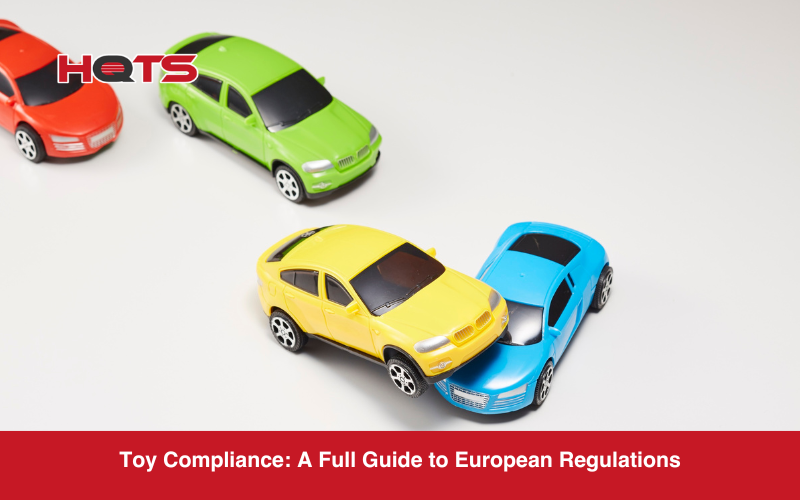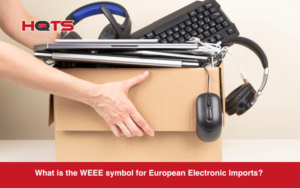Selling toys is a valuable and lucrative business full of exciting opportunities – however, beneath the bright colors and cheerful designs lies a rigorous framework of regulations designed to protect children.
Understanding and adhering to these rules isn’t just about avoiding penalties; it’s about building trust, safeguarding reputations, and most importantly, ensuring every toy brings happiness, not harm.
But don’t worry: in this guide, we will walk you through the essential compliance requirements for selling toys in Europe, highlighting key directives and the very real dangers of cutting corners.
European Toy Safety Directive (EN 71)
At the heart of EU toy safety lies the European Toy Safety Directive. This comprehensive legislation sets out the essential safety requirements that all toys sold within the EU must meet, covering a vast array of potential hazards, including physical and chemical composition, small parts (as potential choking hazards), and flammability. In total the EN71 Directive includes the next 14 parts:
- EN 71-1: Mechanical and physical properties (e.g., sharp edges, small parts).
- EN 71-2: Flammability (e.g., resistance to ignition).
- EN 71-3: Migration of certain elements (e.g., limits on heavy metals like lead).
- EN 71-4: Experimental sets for chemistry and related activities.
- EN 71-5: Chemical toys (sets) other than experimental sets (e.g., modeling clay).
- EN 71-6: Graphical symbol for age warning labeling.
- EN 71-7: Finger paints (e.g., chemical and microbiological requirements).
- EN 71-8: Activity toys for domestic use (e.g., swings, slides).
- EN 71-9: Organic chemical compounds – Requirements.
- EN 71-10: Organic chemical compounds – Sample preparation and extraction.
- EN 71-11: Organic chemical compounds – Methods of analysis.
- EN 71-12: N-Nitrosamines and N-nitrosatable substances (e.g., in balloons).
- EN 71-13: Olfactory board games, cosmetic kits, and gustatory games.
- EN 71-14: Trampolines for domestic use.
Compliance with EN 71 standards is often demonstrated through CE marking, which signifies that the toy has undergone the necessary testing and assessment procedures and meets the legal requirements for sale within the EU. You can read more about the directive here.
REACH Requirements for Toys
While EN 71-3 covers the migration of specific elements, the broader REACH Regulation (Registration, Evaluation, Authorisation, and Restriction of Chemicals) casts a wider net over chemical safety in products, including toys.
REACH complements the Toy Safety Directive by covering a broader range of chemicals and placing responsibilities on the entire supply chain to ensure chemical safety. The list of SVHCS (Substances of Very High Concern) outlined in the regulation has recently been updated to include regulations around microplastics – you can learn more about the update here.
REACH aims to protect human health and the environment from the risks posed by hazardous chemicals. It restricts the use of certain substances in the manufacturing phase and requires comprehensive records of all tests, compliance certificates, and supplier communications. You can read more about REACH in our comprehensive guide.
RoHS Requirements for Toys
For toys that contain electrical or electronic components, the RoHS Directive (Restriction of Hazardous Substances) comes into play. While not exclusively for toys, it includes items such as games consoles, electronics and smart watches. If your toy falls under the definition of Electrical and Electronic Equipment (EEE), it must comply.
If your toy incorporates any electronic parts, you must ensure that all components and materials comply with RoHS. CE marking on such toys implicitly declares RoHS compliance. RoHS restricts the use of ten hazardous substances in EEE, aiming to reduce environmental and health risks associated with their manufacturing, use, and disposal. These substances include lead, mercury, and more- for a full breakdown, check out our guide.
While ROHS and REACH might seem at first glance to be similar, they are distinct and different, and must both be adhered to. Visit this article to learn more about their differences and how to navigate them.
Labeling Rules for Toy Imports to Europe
Clear and accurate labeling is not just good practice; it’s a legal requirement that plays a vital role in consumer safety and product traceability. When importing toys into Europe, you must adhere to strict labeling rules outlined in the Toy Safety Directive (2009/48/EC)
Essentially, the directvie outline that toy labels must include certain elements, information and warnings. This includes CE Marks, Manufacturer Information, Product Identification, Warnings and Instructions.
The General Product Safety Regulation (GPSR), which replaced the General Product Safety Directive (GPSD) in December 2024, applies to all consumer products, including toys. It introduces a Digital Product Passport to enhance compliance and traceability, with implementation details still developing.
The Dangers of Selling Non-Compliant Toys
The consequences of selling non-compliant toys in the European market are severe and far-reaching. If you are found guilty of selling non-compliant toys, you can not only be fined and face legal penalties, but you may also be forced to recall products, resulting in further financial losses, not to mention irreversibly damaging the reputation of your company.
Non-compliant toys can pose serious health and safety risks to children, and thus this issue is taken extremely seriously. The EU has some of the world’s strictest toy safety rules precisely to prevent such tragedies.
HQTS Offers Confidence in Compliance
Ensuring your toys meet every single regulation, from EN 71 to REACH and RoHS, and are correctly labeled, is crucial for your success and, more importantly, for the safety of children.
While navigating the complexities of European toy compliance can be daunting, you don’t have to go it alone: as a leading global quality control and testing service provider, HQTS offers comprehensive solutions tailored specifically for toy safety compliance and testing.
By partnering with HQTS, you can streamline your compliance journey, minimize risks, and confidently bring safe, high-quality toys to the European market. Don’t compromise on safety: choose a trusted expert and get in touch today.




